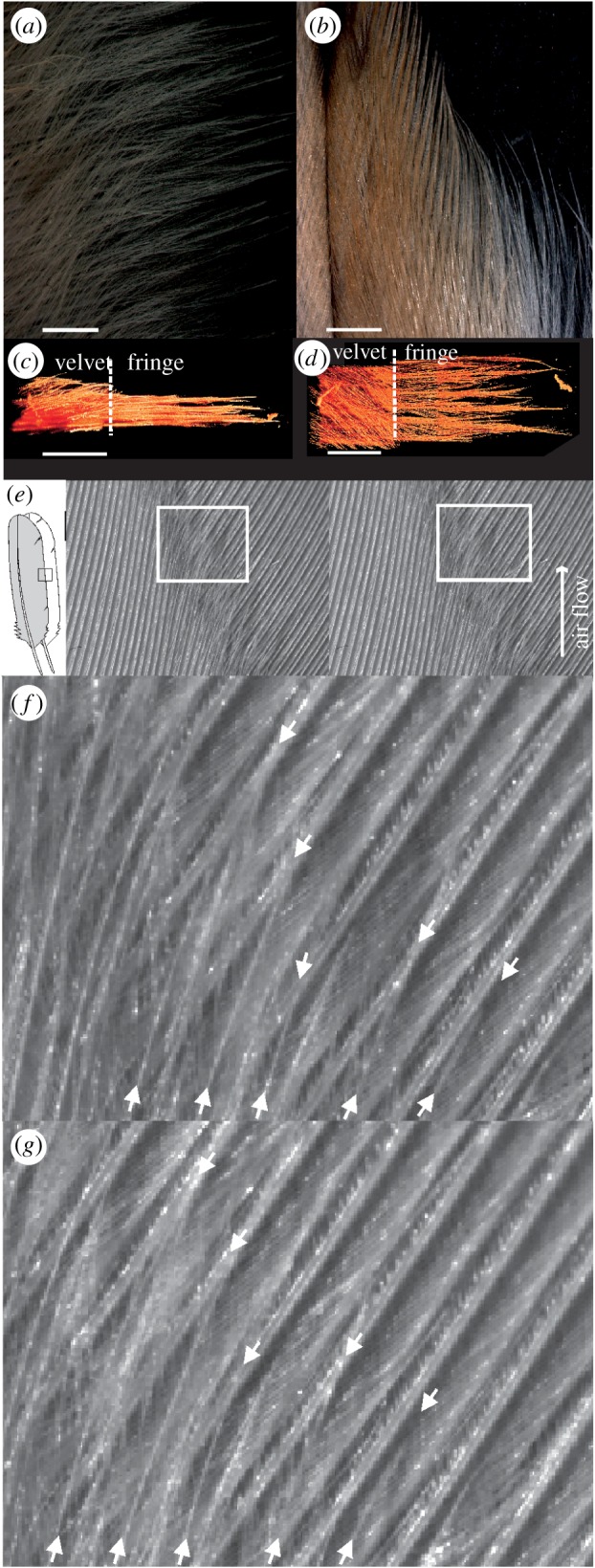Figure 7.

Morphology of fringes. (a) Fringed end of a 10th primary at the apical end. (b) Fringes in the middle of a 10th primary feather. (c) A view on the fringes from the side. (d) A view on the fringes from above. (e) Two adjacent secondaries are shown on the left with their overlap. The photographs show a selected area as indicated by the inset. The orientation of the fringes was visualized by high-speed recording. The view is from ventral. Under static conditions (photograph on the left), the fringes on the left feather do not align with the barb shafts of the right feather. When flow is turned on, the fringes merge into the grooves formed by the barbs of the adjacent feather (photograph on the right). The white rectangles show the regions presented in larger magnification in (f,g). (f,g) Details of the orientation of single barbules are indicated by the arrows. (e) Adapted from fig. 6 in Bachmann et al. [63].
